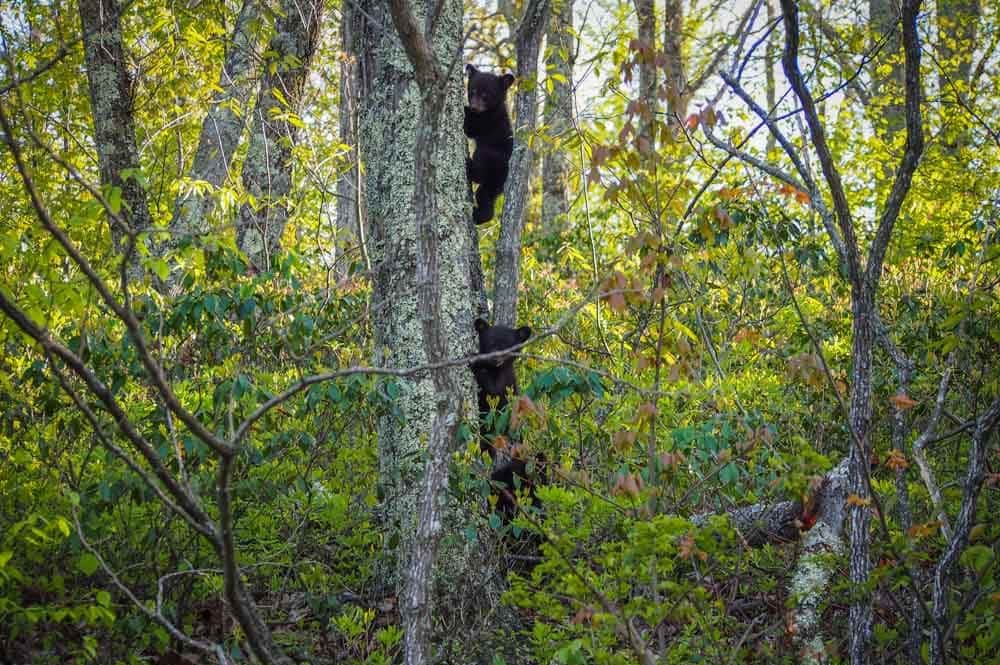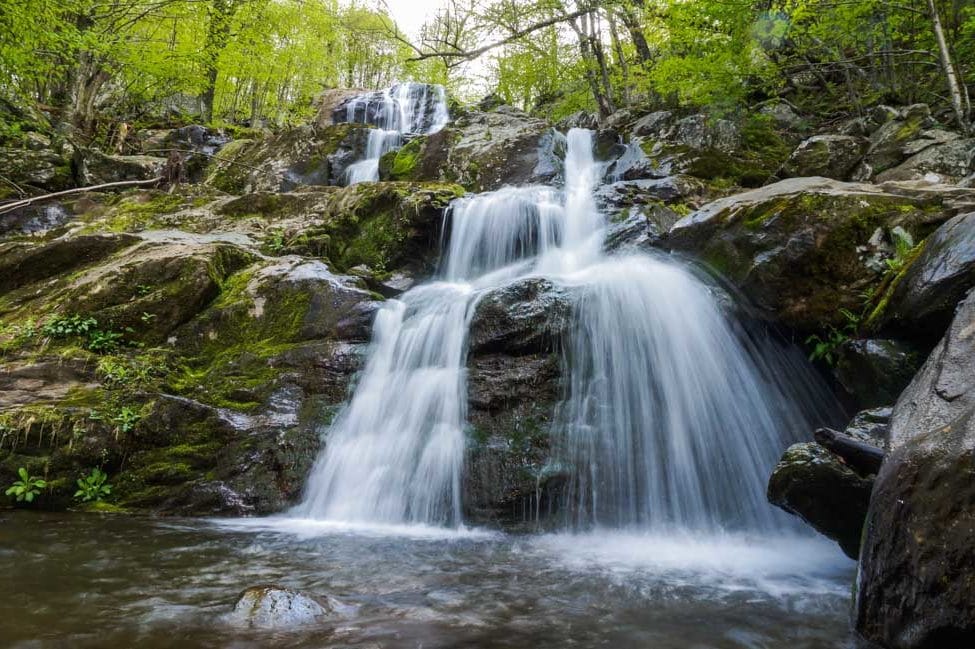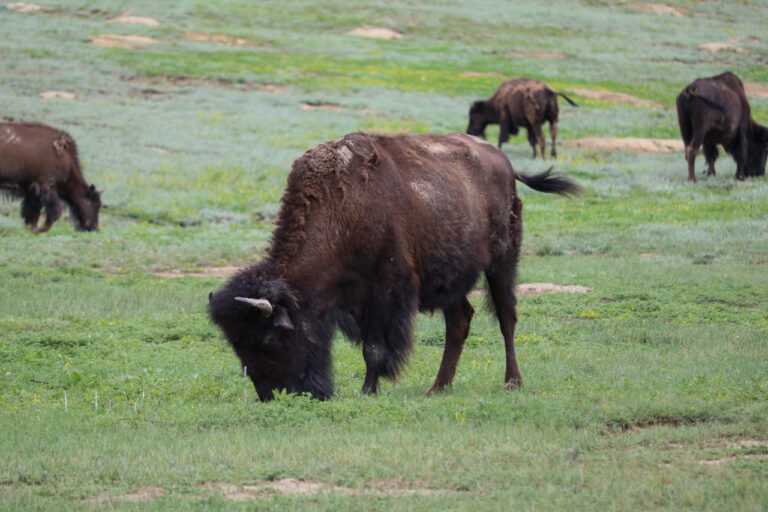7 Awesome Natural Attractions to Photograph in Virginia
Posts on this site may contain affiliate links. This means that whenever you buy or book something through those links, we may earn a small commission – without any extra cost to you at all! You can read more about our Terms of Use / Disclosure here.
From important battlefields to colonial towns, from world-class wineries to music festivals, from sand beaches to mountain ranges, if you’re interested in something—anything—, you can find it in Virginia.
For me personally, it’s the beautiful nature that I love most about “the Old Dominion.” There’s absolutely no shortage of natural attractions to photograph in Virginia.
This post focuses on seven amazing natural attractions in Virginia. I’ve personally visited all these places myself in the course of the past nine months, since we moved to Charlottesville. And I liked them all. What I appreciated most about all these attractions is their sheer variety and, often, uniqueness. There are rock formations and caves, but also waterfalls, parks and mountains.
Use this list as a guide when you’re visiting Virginia and want to head back home with some great travel photos. Of course, make sure to also include other highlights on your itinerary, though. The beauty of Virginia lies in her variety. Visits to photogenic places such as Alexandria, Charlottesville, Manassas National Battlefield, Colonial Williamsburg and Staunton are mandatory as well.
Great Natural Attractions to Photograph in Virginia
Natural Bridge
A Virginia Historic Landmark and National Historic Landmark, the Natural Bridge is, historically speaking, one of the most famous and most visited natural attractions in the United States. While its popularity has declined a bit since the founding of the national parks, its impressiveness and beauty remains.
Soaring 215 feet (65.5 meters) above a limestone gorge that was carved out by Cedar Creek, this rock formation is the result of a collapsed cave. It’s truly massive, which you will undoubtedly realize when you walk toward and underneath it.
The Natural Bridge is said to have been surveyed by George Washington. It also once was the property of Thomas Jefferson, who built a cabin in the area as one of his retreats in Virginia. Some of his guests at the cabin were notable people such as James Monroe, Henry Clay and Martin van Buren.
In the 1800s, the Natural Bridge enjoyed considerable fame in America. Together with Niagara Falls, it was one of the most popular tourist attractions in the entire country, attracting both American and European tourists.
Location: 15 Appledore Ln, Natural Bridge, Virginia
Photography tip: The site can be quite crowded, so, if you want tourist-free photos, you’re advised to get there early.
More information: Natural Bridge State Park
Great Falls Park
Managed by the National Park Service, Great Falls Park encompasses the banks of a section of the Potomac River in northern Virginia. Although it doesn’t technically lie on the George Washington Memorial Parkway, it’s still considered a part of it. If you’re visiting D.C. and you’re in need of a nature fix, Great Falls Park is where you should go.
At Great Falls Park, the Potomac River speeds up as it falls and tumbles over huge boulders and jagged rocks, and passes through Mather Gorge. It’s arguably the most imposing and powerful series of waterfalls in Virginia.
Location: 9200 Old Dominion Dr, McLean, Virginia
Photography tip: There are three lookout points from which you can shoot the falls, all situated a quick stroll from the visitor center. I recommend setting up at lookouts 2 and 3, as they offer far superior views. Also, I arrived before the park even opened, super-early in the morning, and was allowed in for free by the park ranger on duty.
More information: Great Falls Park
Shenandoah National Park
One of the most accessible national parks in the United States, Shenandoah National Park lies a fairly short drive from Washington, D.C. and has four different entrances. Protecting a long and narrow section of the Blue Ridge Mountains in central Virginia, this renowned park is so lush and fertile that it supports large numbers of wildlife.
If you want to do some wildlife photography in Virginia, there’s no better place to go to than Shenandoah National Park. Home to hundreds of black bears, one of the densest populations anywhere in the country, you’re almost guaranteed to spot one when driving Skyline Drive. The only road through the park, Skyline Drive is 105 miles (169 kilometers) long and features no fewer than 75 overlooks. Numerous hiking trails lead to scenic mountain summits or to photogenic waterfalls.
When it comes to natural attractions to photograph in Virginia, Shenandoah National Park should always be your main focus. It has everything, from abundant wildlife to spectacular vistas, waterfalls and mountain meadows.
Location: Front Royal Entrance via I-66 and Route 340, Thornton Gap Entrance via Route 211, Swift Run Gap Entrance via Route 33, and Rockfish Gap Entrance via I-64 and Route 250.
Photography tip: While Skyline Drive is a fantastic road and offers countless photo ops, I encourage you to go for a hike, too. You haven’t fully experienced Shenandoah National Park unless you’ve stood on a boulder-strewn mountain summit. Moreover, if you want to see waterfalls, you’ll have to go for a hike anyway. I recommend dedicating at least one whole day to this park, but preferably two or more. Also, get up early to catch the sunrise or stick around for the sunset—they’re both phenomenal.
More information: Shenandoah National Park
Crabtree Falls
The tallest cascading waterfall east of the Mississippi River, Crabtree Falls is one of the greatest and most popular natural attractions to photograph in Virginia. Located in George Washington and Jefferson National Forests, a short distance from the Blue Ridge Parkway, it consists of five major cascades and many more smaller ones, in total falling 1,200 vertical feet (366 meters).
You can access the first overlook via a paved wheelchair-accessible path from the parking lot. More overlooks await you if you follow the two-mile (three-kilometer) hiking trail upward, which you are strongly recommended to do.
Location: 11581 Crabtree Falls Hwy, Montebello, Virginia
Photography tip: If you want to get some good shots of Crabtree Falls, you should hike the Crabtree Falls Trail, which is a pretty great hiking trail running upward along the falls and through the woods. Additionally, after reaching the top of the falls, you can extend your hike to the summit of The Priest for some excellent Blue Ridge Mountain views.
More information: Crabtree Falls
Grayson Highlands State Park
It’s hard to overstate the beauty of Grayson Highlands State Park. With its expansive mountain meadows, pine forests and wild ponies, Grayson Highlands has everything you could possible want if you’re focusing on landscape photography.
There are many miles of scenic hiking and horseback riding trails, including many a thru-hiker’s favorite section of the Appalachian Trail. Adjacent to Grayson Highlands State Park lies the Mount Rogers National Recreation Area, home to Mount Rogers, which is the highest mountain in Virginia. In this area, you’re allowed to camp essentially anywhere. It’s a dream destination for adventure-minded landscape photographers.
This less-known park in the southwestern corner of Virginia is one of the most rewarding hiking destinations in the United States.
Location: 829 Grayson Highland Ln, Mount of Wilson, Virginia
Photography tip: Bring your hiking shoes and your tent and hike up Mount Rogers. The wide and open views you’ll witness on that hike are unparalleled anywhere else in Virginia.
More information: Grayson Highlands State Park
Luray Caverns
Although undeniably commercial, Luray Caverns is still worth visiting. I remember being very skeptical of the place before and even after arriving there—it’s one of those places advertised on roadside billboards and designed somewhat like a mini-amusement park. There’s a clear focus on making money.
That being said, the caverns themselves are truly spectacular. Despite having to visit them in an overcrowded group of tourists (at least, that was the case in summer), the sheer number of rock formations, stalactites and stalagmites, enormous multi-story-high rooms and underground mirror pools is nothing short of impressive. One specific mirror pool, about halfway through the tour, blew my mind completely. There’s a reason that this cave has attracted visitors since 1878.
Location: 101 Cave Hill Rd, Luray, Virginia
Photography tip: As you have to visit the caves on a guided tour, it’s strongly recommended to stay at the back of the group so that you can take photos without any people in them.
More information: Luray Caverns
Peaks of Otter
Peaks of Otter is an area around milepost 86 on the Blue Ridge Parkway. This is, in fact, probably my favorite spot on the entire Blue Ridge Parkway in Virginia. I especially love the variety of the area. There are waterfalls, a picturesque man-made lake and the three mountains that make up the Peaks of Otter—Sharp Top, Flat Top and Harkening Hill.
Sharp Top is definitely the best one of the three, from a photography standpoint at least. The bare summit with its stone staircases overlooking the Blue Ridge Mountains below is as photogenic as mountain summits come. Sharp Top’s summit is the very reason that I included Peaks of Otter in this overview of the best natural attractions to photograph in Virginia. The hike to the summit isn’t all that difficult. It’s about 1.5 miles (2.4 kilometers) to the top, a hike that shouldn’t take more than 45 minutes.
Location: 85554 Blue Ridge Pkwy, Bedford, Virginia
Photography tip: I recommend spending at least one day and one night in the area. The Peaks of Otter Lodge is a fantastic base for exploring the mountains. It’s also a nice spot to break up your Blue Ridge Parkway drive. By spending the night, you’ll give yourself the chance to photograph the sunset and/or sunrise, which can be phenomenal from the Sharp Top summit.
More information: Peaks of Otter, Blue Ridge Parkway
Like This Post? Pin It!
Have You Ever Visited Any of These Natural Attractions to Photograph in Virginia? Do You Have Suggestions For Other Photogenic Spots in the State?






























One Comment